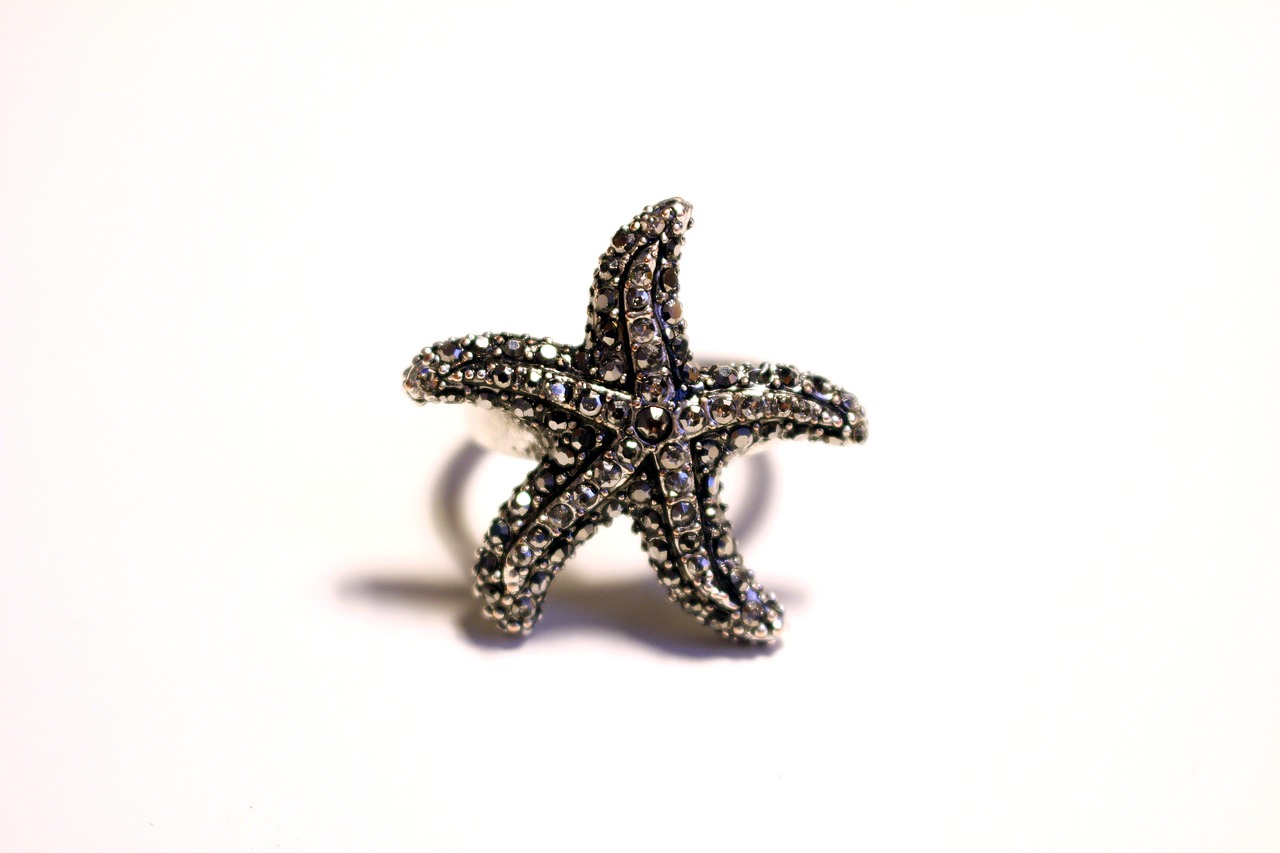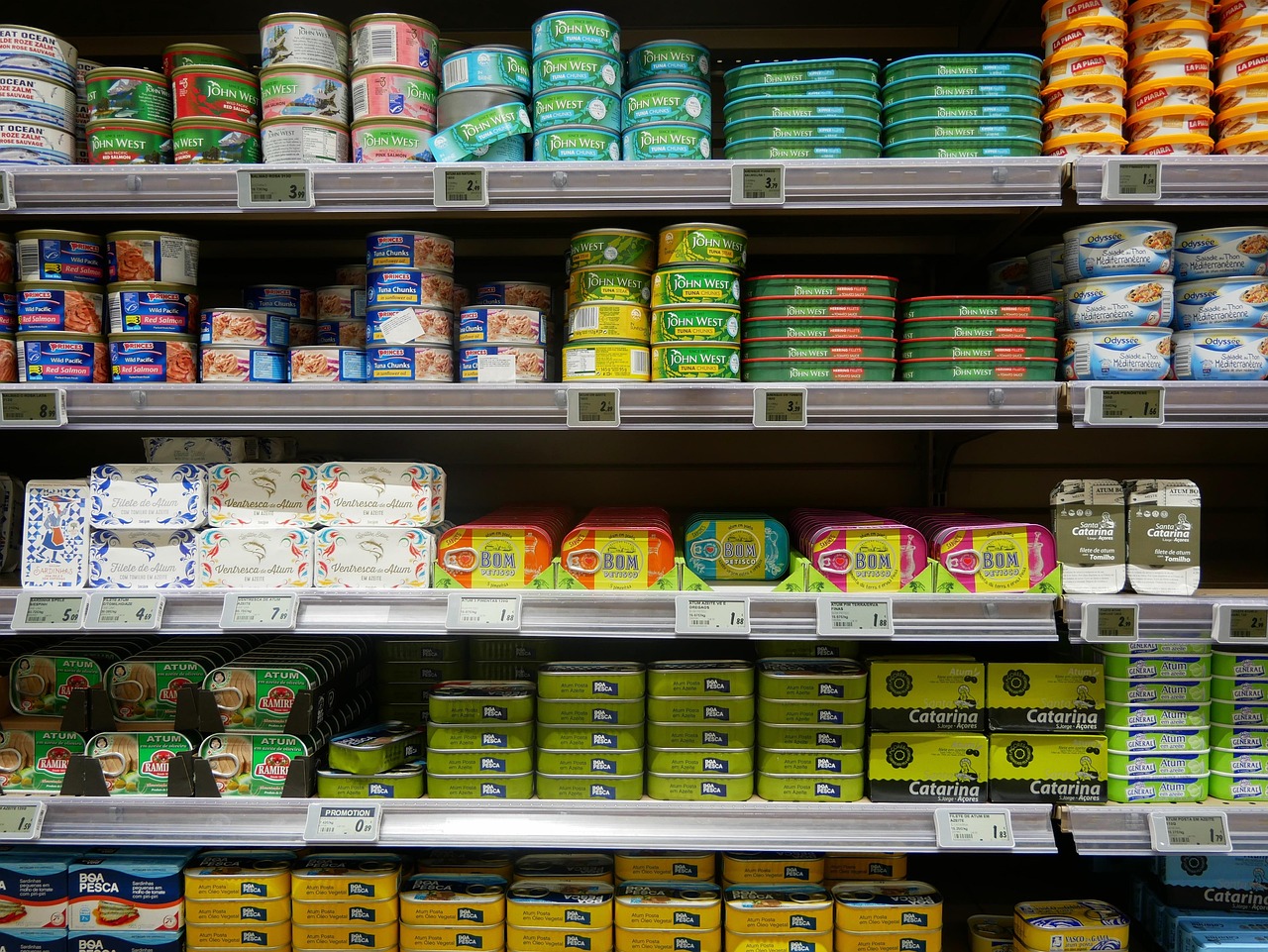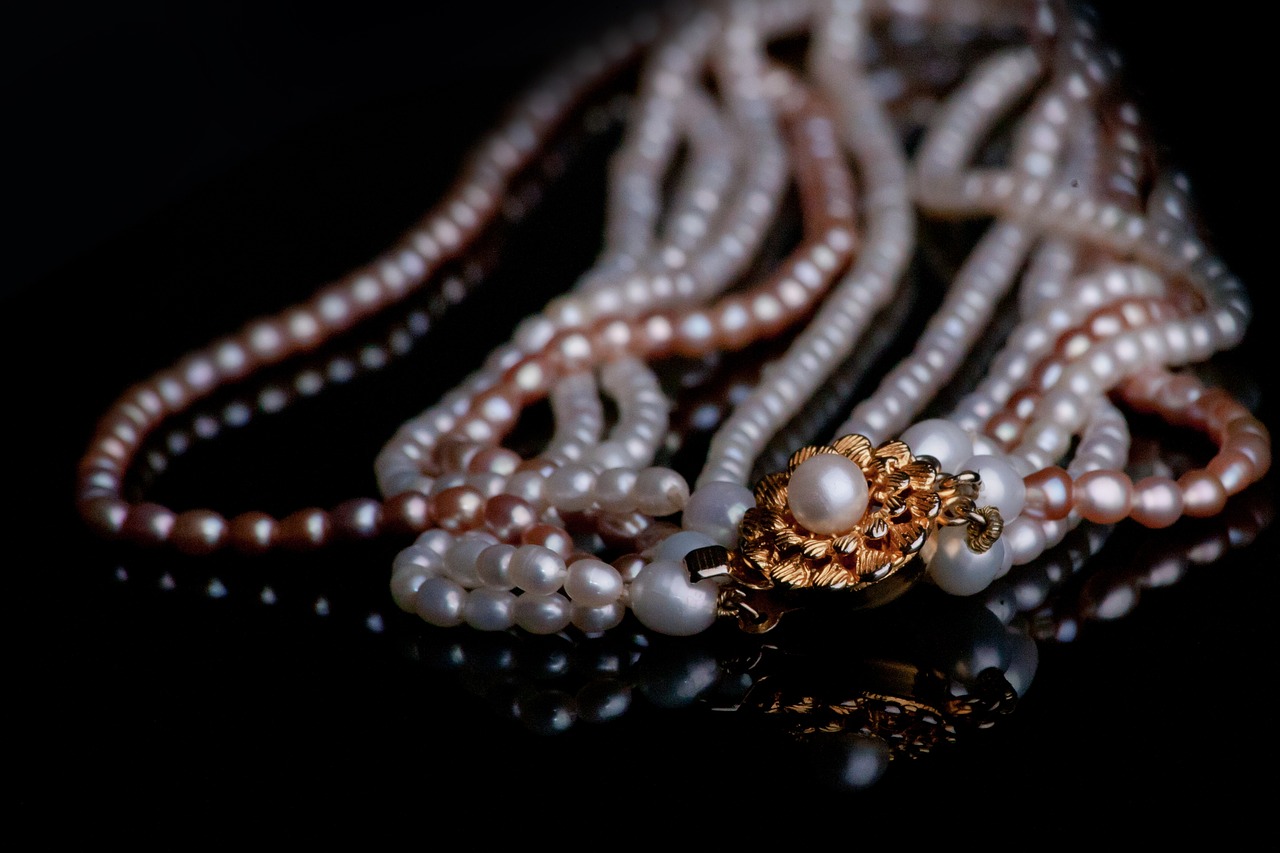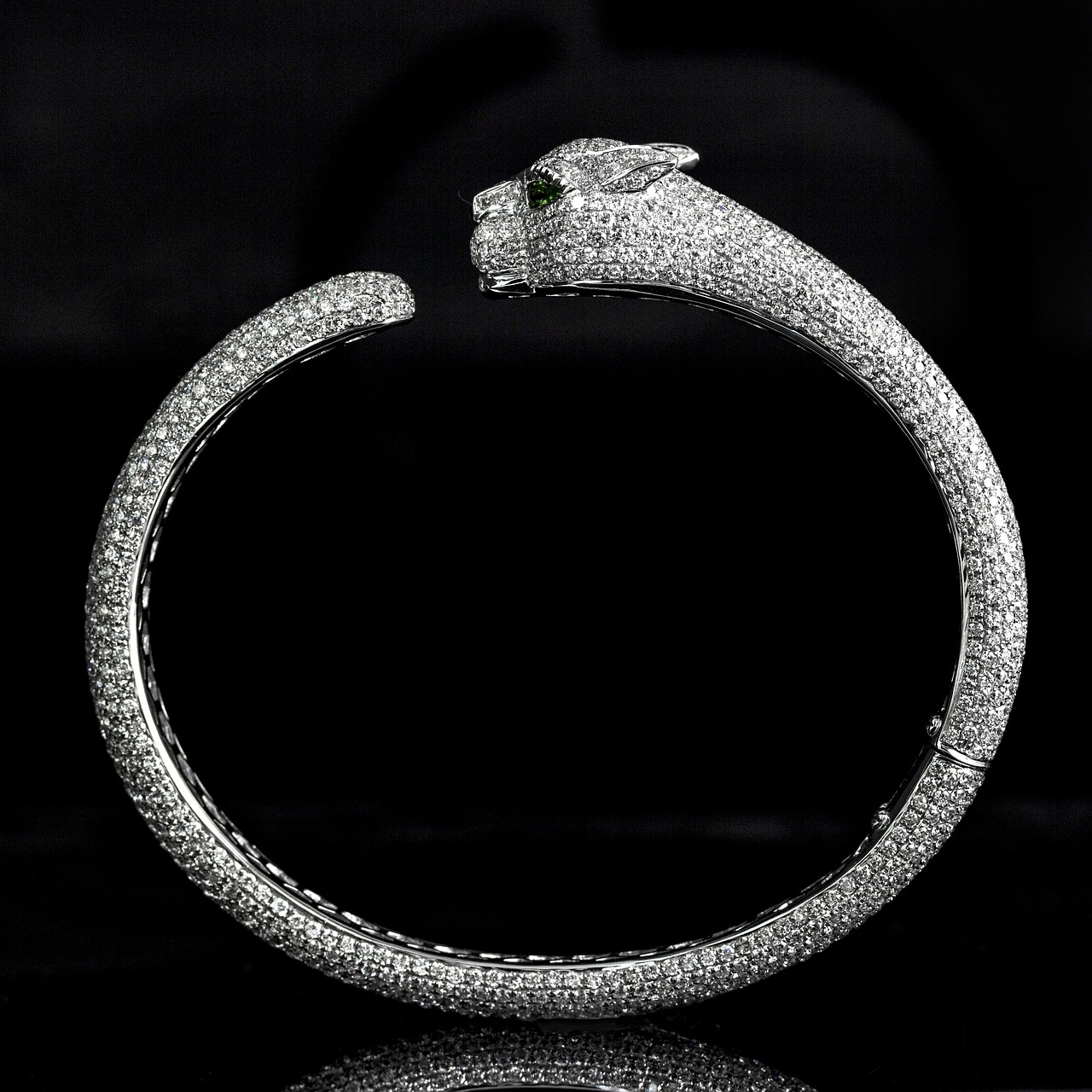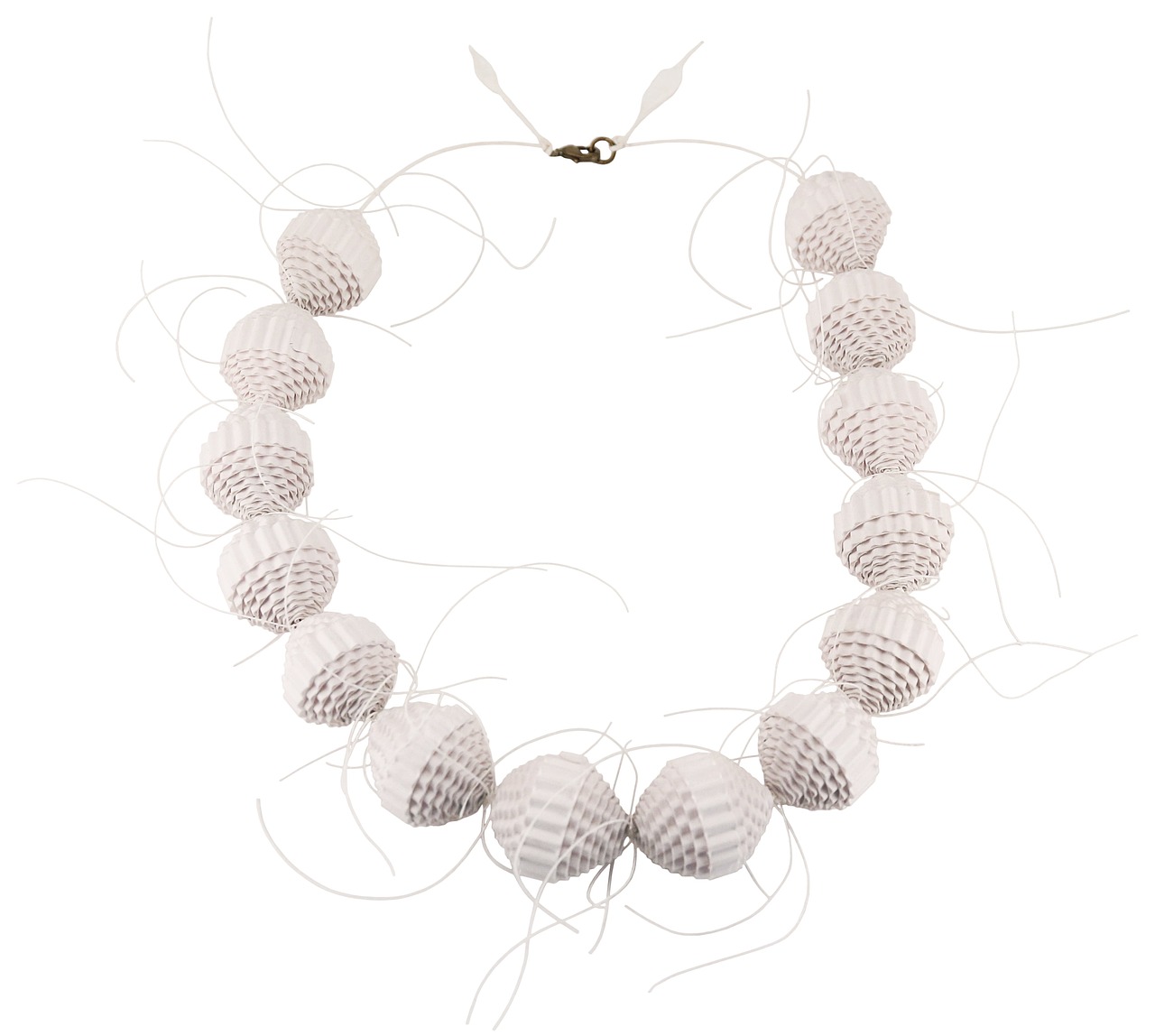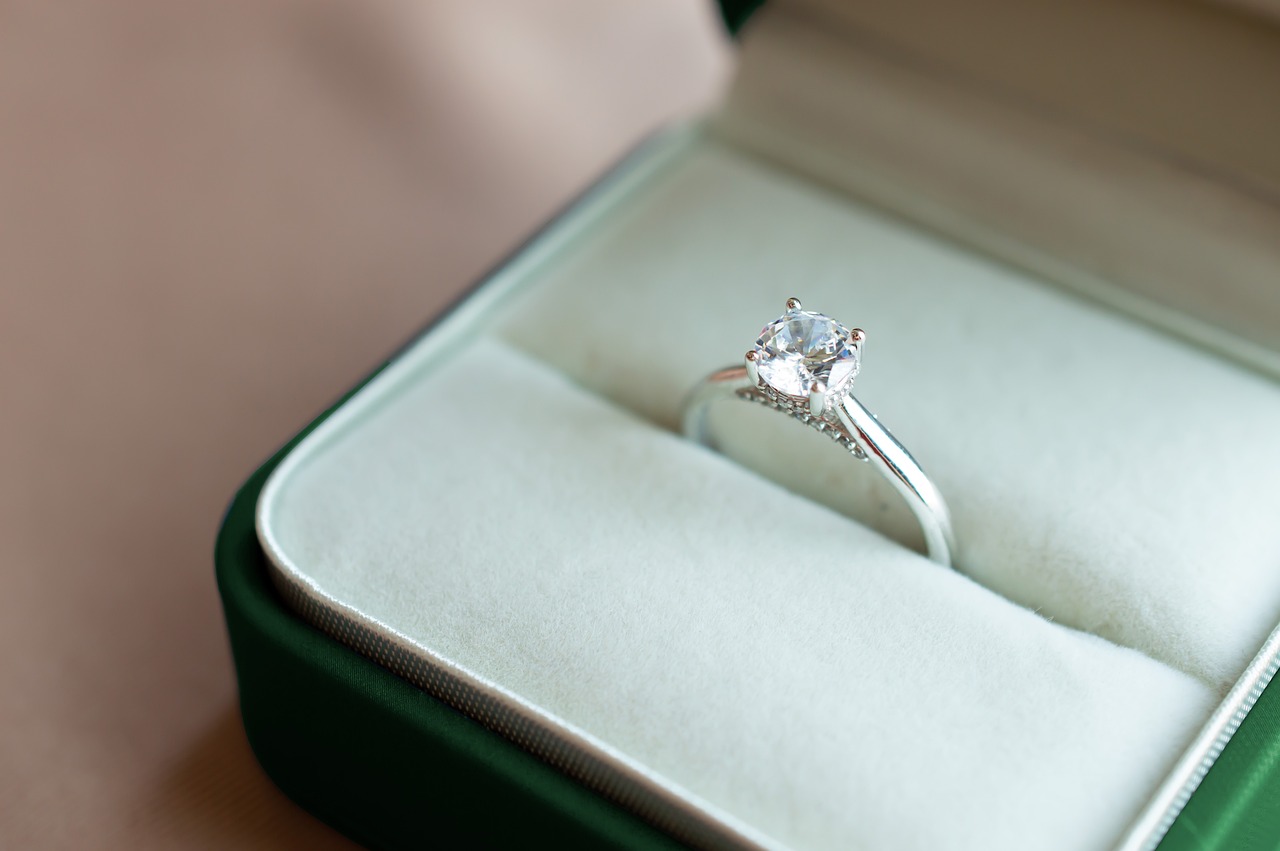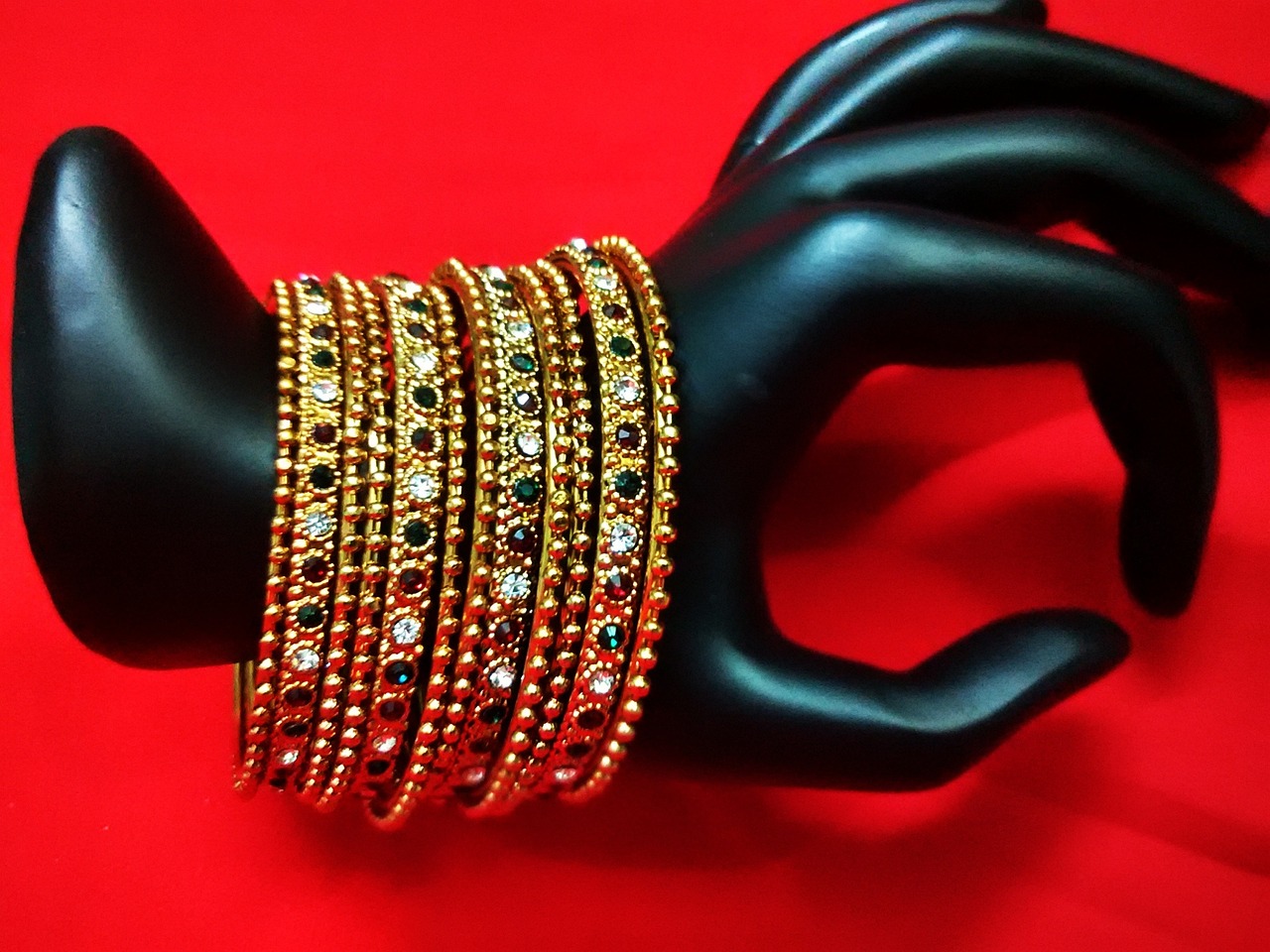This article explores effective methods for cleaning silver jewelry and offers practical tips to prevent tarnishing, ensuring your pieces remain beautiful and radiant for years to come.
Why Does Silver Tarnish?
Understanding the reasons behind silver tarnishing is essential for effective prevention. Silver tarnishes due to a chemical reaction when it comes into contact with sulfur compounds in the air or moisture. Environmental factors like humidity, pollution, and even certain foods can accelerate this process. By recognizing these factors, you can take proactive steps to protect your jewelry.
How to Clean Silver Jewelry Safely
When it comes to cleaning silver jewelry, safety is paramount. Using harsh chemicals can damage your pieces, so it’s important to choose gentle yet effective cleaning methods.
- Using Mild Soaps for Cleaning
- Choosing the Right Soap
- Step-by-Step Cleaning Process
- Prepare a solution of warm water and mild soap.
- Soak your jewelry for a few minutes.
- Use a soft cloth or a toothbrush with soft bristles to gently scrub away tarnish.
- Rinse thoroughly and dry with a soft, lint-free cloth.
Mild soaps are a safe option for cleaning silver jewelry. Look for soaps that are free from dyes and fragrances, as these can leave residues that tarnish silver.
Opt for natural, biodegradable soaps. Brands that focus on gentle formulations work best. Avoid anything with bleach or ammonia, as these can be harmful to silver.
Using Commercial Silver Cleaners
While DIY methods are effective, commercial silver cleaners can also restore shine. Look for products that are specifically designed for silver and follow the instructions carefully to avoid damage.
DIY Cleaning Solutions for Silver Jewelry
- Baking Soda and Water Paste
- Vinegar and Baking Soda Method
A simple paste made from baking soda and water can effectively remove tarnish. Mix three parts baking soda with one part water to form a paste, apply it gently, and rinse thoroughly.
This combination creates a powerful cleaning solution. Mix half a cup of vinegar with two tablespoons of baking soda and soak your jewelry for a few hours before rinsing.
Preventing Tarnish: Storage Tips
Proper storage is crucial for preventing tarnish. Here are some tips to keep your silver jewelry looking its best:
- Using Anti-Tarnish Pouches
- Choosing the Right Storage Environment
Invest in anti-tarnish pouches or cloths, which absorb moisture and prevent tarnishing agents from reaching your jewelry.
Store your silver jewelry in a cool, dry place. Avoid storing it in bathrooms where humidity can cause tarnishing.
Regular Maintenance for Silver Jewelry
Regular care can significantly extend the life of your silver jewelry. Establishing a routine cleaning schedule based on usage will help keep your pieces in top condition.
- Establishing a Cleaning Schedule
- Inspecting for Damage
For frequently worn pieces, aim to clean them every few weeks. For items worn less often, a monthly inspection and cleaning will suffice.
Regularly check your jewelry for signs of wear, such as scratches or loose stones. Addressing these issues promptly can prevent further damage.
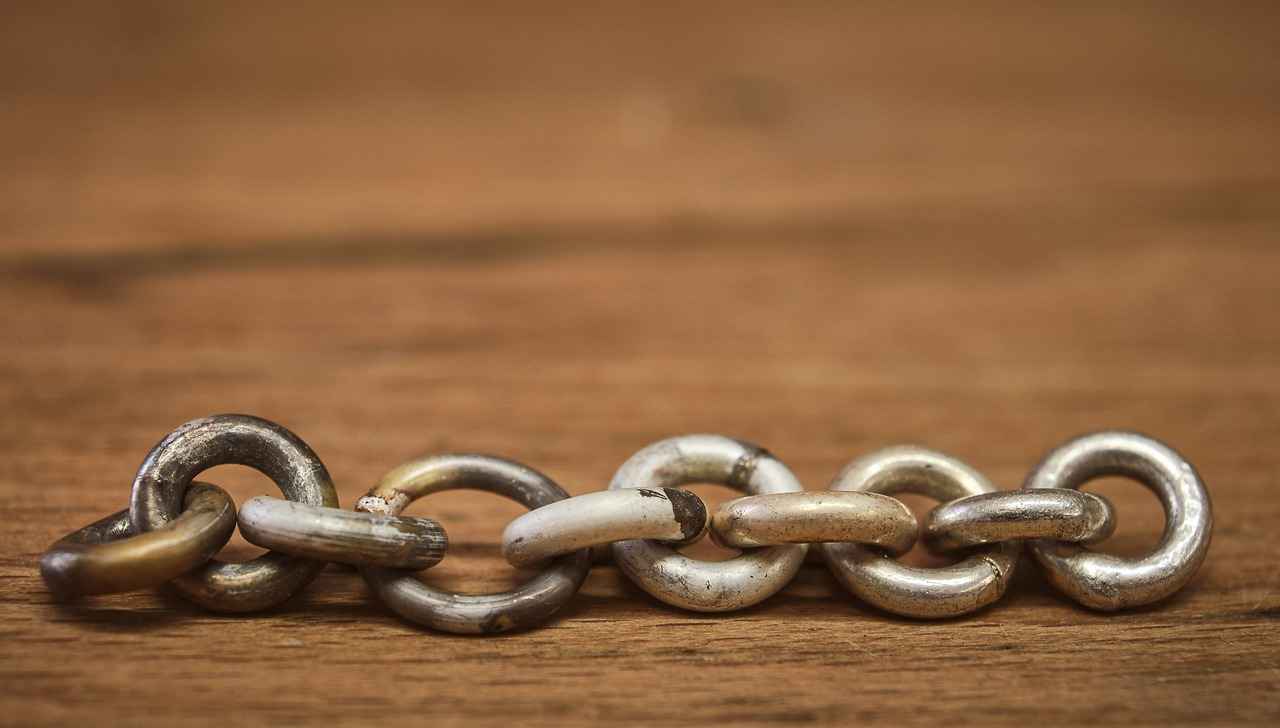
Why Does Silver Tarnish?
Understanding why silver tarnishes is essential for anyone who owns silver jewelry. Tarnishing is a natural process that occurs when silver reacts with sulfur compounds in the air, leading to the formation of silver sulfide. This section will explore the various factors that contribute to tarnishing and how environmental elements play a significant role in this process.
Silver tarnish is primarily caused by a chemical reaction between silver and sulfur-containing substances. These substances can be found in various environments, including household items like rubber bands, certain foods, and even the air we breathe. When silver comes into contact with these substances, it can lead to discoloration, which manifests as a dull, grayish film on the surface of the metal.
Several key factors influence the rate at which silver tarnishes:
- Humidity: High humidity levels can accelerate tarnishing. Moisture in the air can facilitate the reaction between silver and sulfur compounds, leading to quicker tarnish formation.
- Pollution: Urban areas with high levels of air pollution can contribute to tarnishing. Chemicals from vehicle emissions and industrial activities can increase the amount of sulfur in the air.
- Storage Conditions: Storing silver jewelry in damp or poorly ventilated areas can lead to faster tarnishing. It’s essential to choose a dry, cool place for storage.
- Body Chemistry: Individual body chemistry can also play a role. Some people may have skin oils or sweat that contain sulfur compounds, which can contribute to tarnishing when wearing silver jewelry.
To illustrate the impact of these factors, consider the following table:
| Factor | Impact on Tarnishing |
|---|---|
| Humidity | Increases tarnishing speed due to moisture facilitating reactions |
| Air Pollution | Elevates sulfur levels in the environment, leading to more tarnish |
| Storage Conditions | Poor storage can trap moisture and sulfur, accelerating tarnishing |
| Body Chemistry | Personal skin chemistry may contribute to tarnishing when worn |
In addition to these factors, it’s important to note that preventive measures can significantly reduce the risk of tarnishing. Regular cleaning, proper storage, and using anti-tarnish products can help maintain the shine and luster of your silver jewelry.
By understanding the chemical reactions and environmental factors that lead to tarnishing, you can take proactive steps to protect your silver. This knowledge not only enhances the longevity of your pieces but also ensures that they remain beautiful and cherished for years to come.
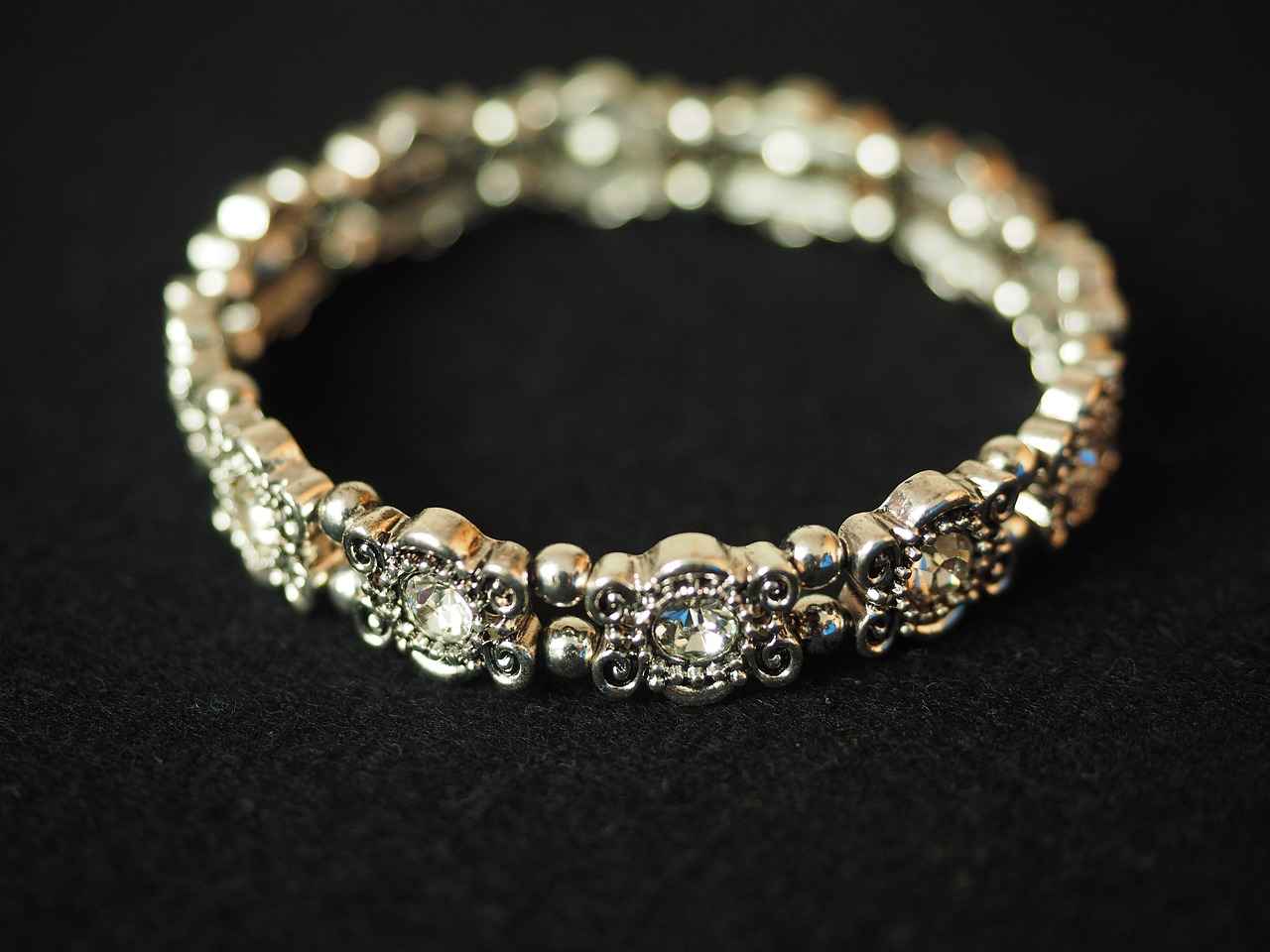
How to Clean Silver Jewelry Safely
Cleaning silver jewelry is an essential task for maintaining its beauty and shine. However, it requires careful methods to avoid damaging your treasured pieces. In this section, we will explore safe cleaning techniques that effectively remove tarnish while preserving the integrity of your jewelry.
Silver jewelry can be delicate, and improper cleaning methods can lead to scratches or other damage. Understanding the right approach is crucial for ensuring your pieces remain in optimal condition. Here, we discuss various cleaning methods that protect your jewelry while effectively eliminating tarnish.
One of the safest ways to clean silver jewelry is by using mild soaps. These soaps are gentle enough to avoid damaging the silver while still being effective against tarnish.
- Castile Soap: A natural soap that is gentle and biodegradable.
- Dish Soap: A mild formula without harsh chemicals is ideal.
- Baby Soap: Formulated for sensitive skin, it’s also gentle on silver.
To clean your silver jewelry safely, follow these simple steps:
- Prepare a solution of warm water and a few drops of mild soap.
- Soak your silver jewelry for about 5-10 minutes to loosen tarnish.
- Gently scrub with a soft toothbrush or cloth, focusing on intricate details.
- Rinse thoroughly under lukewarm water to remove soap residue.
- Pat dry with a soft, lint-free cloth.
For those who prefer a more straightforward approach, commercial silver cleaners can be very effective. However, it’s essential to use them correctly to avoid damaging your jewelry.
Some well-known brands include:
- Silvo: Known for its fast-acting formula.
- Hagerty: Offers a variety of cleaning products, including wipes and liquids.
Always follow the manufacturer’s instructions and test a small area first.
If you prefer a more natural approach, there are several DIY cleaning solutions you can make at home.
A simple paste made from baking soda and water can effectively clean tarnished silver:
Ingredients:- 1/4 cup baking soda- 2 tablespoons waterInstructions:1. Mix baking soda and water to form a paste.2. Apply the paste to the tarnished areas using a soft cloth.3. Rinse thoroughly and dry.
This combination creates a powerful cleaning solution:
Ingredients:- 1/2 cup white vinegar- 2 tablespoons baking sodaInstructions:1. Soak your silver jewelry in the vinegar for 2-3 hours.2. Rinse with cold water and dry with a soft cloth.
Proper storage is essential for minimizing tarnish on silver jewelry. Here are some tips:
Investing in anti-tarnish pouches can significantly extend the life of your silver. These pouches contain materials that absorb tarnishing agents.
Store your silver jewelry in a cool, dry place, away from direct sunlight and humidity. Consider using a jewelry box lined with anti-tarnish fabric for optimal protection.
Establishing a routine for cleaning and inspecting your silver jewelry can help maintain its beauty over time. Regular maintenance is key to preventing tarnish and ensuring your pieces look their best.
Depending on how often you wear your jewelry, aim to clean it at least once a month to keep tarnish at bay.
Regularly check your silver jewelry for any signs of damage, such as loose stones or scratches. Addressing these issues promptly can prevent further damage.
Using Mild Soaps for Cleaning
When it comes to maintaining the beauty of your silver jewelry, using the right cleaning methods is essential. One effective and gentle option is to use mild soaps. Unlike harsh chemicals that can damage silver, mild soaps provide a safe alternative for cleaning without compromising the integrity of your cherished pieces.
Mild soaps are formulated to be gentle on the skin and are free from harsh chemicals, making them an ideal choice for cleaning delicate items like silver jewelry. These soaps typically contain natural ingredients and are less likely to cause any adverse reactions, ensuring that your jewelry retains its shine and luster.
- Non-toxic: Mild soaps are safe for both you and your jewelry, reducing the risk of harmful chemical exposure.
- Effective Cleaning: They effectively remove dirt, oils, and tarnish without scratching or damaging the silver surface.
- Easy to Use: Cleaning with mild soap is a simple process that requires minimal effort and time.
When selecting a mild soap, consider the following options:
- Castile Soap: Made from vegetable oils, Castile soap is biodegradable and gentle on silver.
- Baby Soap: Formulated for sensitive skin, baby soap is another excellent choice for cleaning jewelry.
- Liquid Dish Soap: Opt for a gentle, fragrance-free dish soap that won’t leave residues.
To effectively clean your silver jewelry using mild soap, follow these simple steps:
- Gather Supplies: You will need a bowl, warm water, a mild soap, a soft cloth, and a soft-bristle toothbrush.
- Prepare the Solution: Mix a few drops of mild soap in warm water until it creates a soapy solution.
- Soak the Jewelry: Place your silver jewelry in the soapy water and let it soak for about 5-10 minutes.
- Gently Clean: Use the soft cloth or toothbrush to gently scrub the jewelry, focusing on any tarnished or dirty areas.
- Rinse Thoroughly: Rinse the jewelry under cool running water to remove all soap residues.
- Dry Properly: Use a clean, soft cloth to dry the jewelry completely before storing it.
While cleaning with mild soaps is effective, here are some additional tips to keep in mind:
- Avoid Abrasives: Never use abrasive materials or harsh scrubbing pads, as they can scratch the silver.
- Test First: If you have a new soap, test it on a small area of the jewelry first to ensure it doesn’t cause any adverse reactions.
- Frequency: Clean your silver jewelry regularly to prevent tarnish buildup and maintain its shine.
By incorporating mild soaps into your jewelry cleaning routine, you can ensure that your silver pieces remain radiant and free from tarnish. This gentle method not only protects your jewelry but also provides peace of mind knowing you are using safe and effective cleaning solutions.
Choosing the Right Soap
When it comes to maintaining the beauty of your silver jewelry, is essential. Not all soaps are created equal, and selecting a gentle yet effective cleanser can make a significant difference in preserving your precious pieces. Here, we recommend specific types of mild soaps that are gentle on silver but tough on tarnish.
A mild soap is typically free from harsh chemicals, fragrances, and dyes that can damage delicate materials like silver. Look for soaps that are labeled as natural or organic, as these are often formulated with gentler ingredients. Additionally, soaps that contain moisturizing properties can help protect your jewelry from drying out.
- Castile Soap: Made from vegetable oils, this soap is biodegradable and non-toxic, making it a safe choice for cleaning silver.
- Baby Soap: Specifically formulated to be gentle on sensitive skin, baby soaps are usually free from harsh chemicals and fragrances.
- Liquid Hand Soap: Opt for a mild, unscented liquid hand soap that is free of antibacterial agents, as these can be too harsh.
- Dish Soap: A gentle dish soap can also be effective. Look for brands that emphasize being free of phosphates and harsh chemicals.
Using harsh soaps can lead to a range of issues, including scratches and discoloration on your silver jewelry. These soaps often contain abrasive ingredients that can wear down the surface of the metal, resulting in a dull appearance. Additionally, the chemicals in these soaps can accelerate tarnishing, counteracting your cleaning efforts.
To effectively clean your silver jewelry using mild soap, follow these simple steps:
- Prepare a Soapy Solution: Mix a few drops of your chosen mild soap with warm water in a small bowl.
- Soak the Jewelry: Place your silver pieces in the soapy water for a few minutes to loosen any tarnish.
- Gently Clean: Use a soft cloth or a soft-bristled toothbrush to gently scrub the jewelry, paying special attention to intricate designs.
- Rinse Thoroughly: Rinse the jewelry under lukewarm running water to remove any soap residue.
- Dry Properly: Pat the jewelry dry with a soft, lint-free cloth to prevent water spots.
In addition to using the right soap, consider the following tips to keep your silver jewelry looking its best:
- Avoid Exposure to Harsh Chemicals: Keep your silver away from cleaning products, perfumes, and lotions.
- Store Properly: Use anti-tarnish pouches or cloths when storing your silver to minimize tarnishing.
- Regular Cleaning: Establish a routine cleaning schedule to prevent tarnish buildup.
By choosing the right soap and following these cleaning tips, you can ensure your silver jewelry remains radiant and beautiful for years to come. Remember, a little care goes a long way in preserving the luster of your cherished pieces.
Step-by-Step Cleaning Process
Cleaning your silver jewelry can seem daunting, but with the right approach, it can be a simple and satisfying process. This step-by-step guide will help you clean your silver jewelry using soap, ensuring that you achieve the best results without risking any damage to your cherished pieces.
- Mild dish soap – Look for a gentle formula without harsh chemicals.
- Warm water – Not too hot, as extreme temperatures can damage some pieces.
- A soft cloth or microfiber cloth – For drying and polishing.
- A small bowl – To mix your cleaning solution.
- A soft-bristled toothbrush – For intricate designs.
Start by creating a cleaning solution. In a small bowl, mix a few drops of mild dish soap with warm water. Ensure that the soap is well-dissolved in the water. This mixture will help to lift tarnish without damaging the silver.
Carefully place your silver jewelry into the soapy water. Allow it to soak for about 5-10 minutes. This soaking process helps to loosen any built-up tarnish and dirt.
After soaking, take the soft-bristled toothbrush and gently scrub the jewelry. Focus on areas with intricate designs or hard-to-reach spots. Be sure to use a light touch to avoid scratching the surface of the silver.
Once you’ve cleaned the jewelry, rinse it thoroughly under warm running water. This step is crucial to remove any soap residue that could cause tarnishing if left on the surface.
After rinsing, gently pat your silver jewelry dry with a soft cloth. Avoid rubbing, as this can create scratches. Once dry, you can use a clean microfiber cloth to polish the silver, enhancing its shine.
After cleaning, take a moment to inspect your jewelry. If you notice any remaining tarnish, you can repeat the process or use a specialized silver cleaner for stubborn spots. Always ensure that any product used is safe for your specific type of silver jewelry.
- Store properly: Keep your silver jewelry in a cool, dry place, preferably in anti-tarnish pouches or cloths.
- Avoid exposure: Minimize exposure to perfumes, lotions, and harsh chemicals that can accelerate tarnishing.
- Regular cleaning: Establish a routine cleaning schedule to keep your pieces looking their best.
By following this , you can ensure that your silver jewelry remains beautiful and tarnish-free. Regular care and proper cleaning techniques will help preserve the integrity of your pieces, allowing you to enjoy them for years to come.
Using Commercial Silver Cleaners
When it comes to restoring the shine of your silver jewelry, commercial silver cleaners are a popular choice. These products are specifically formulated to effectively remove tarnish and grime, making them a go-to solution for many jewelry enthusiasts. In this section, we will explore some of the most popular commercial silver cleaners available on the market and provide guidelines on how to use them safely to achieve the best results.
- Silver Polish Creams: Many brands offer cream-based cleaners that provide a gentle yet effective cleaning solution. These creams often contain polishing agents that help restore shine while protecting the silver.
- Liquid Silver Cleaners: These are often used for quick clean-ups. They are usually dipped or soaked in the solution, making them convenient for cleaning multiple pieces at once.
- Wipes: Pre-moistened wipes are a great option for on-the-go cleaning. They are easy to use and perfect for quick touch-ups.
While commercial cleaners can be very effective, it is essential to use them correctly to avoid damaging your jewelry. Here are some safety tips to keep in mind:
- Read the Instructions: Always start by reading the manufacturer’s instructions on the product label. Different products may have specific usage guidelines.
- Test on a Small Area: Before applying the cleaner to the entire piece, test it on a small, inconspicuous area. This will help you determine if the product is safe for your jewelry.
- Avoid Abrasive Materials: When using creams or pastes, avoid using abrasive cloths or sponges, as these can scratch the surface of your silver.
- Rinse Thoroughly: After cleaning, rinse your jewelry under lukewarm water to remove any residue. This step is crucial to prevent any chemical reactions that could harm the silver.
- Dry Properly: Use a soft, lint-free cloth to dry your jewelry completely. This will help prevent water spots and further tarnishing.
While commercial silver cleaners can be highly effective, there are some precautions you should take:
- Store Safely: Keep cleaners out of reach of children and pets, as some ingredients can be harmful if ingested.
- Use in a Well-Ventilated Area: Many cleaners contain strong chemicals, so it’s essential to use them in a well-ventilated area to avoid inhaling fumes.
- Know Your Jewelry: Some jewelry pieces may have stones or settings that are sensitive to chemicals. Always verify that the cleaner is safe for use on your specific jewelry.
By following these guidelines and using commercial silver cleaners appropriately, you can effectively restore the shine to your silver jewelry while maintaining its integrity. Whether you choose a cream, liquid, or wipe, the key is to handle your jewelry with care. Remember that regular maintenance and cleaning can extend the life of your cherished pieces, keeping them looking beautiful for years to come.
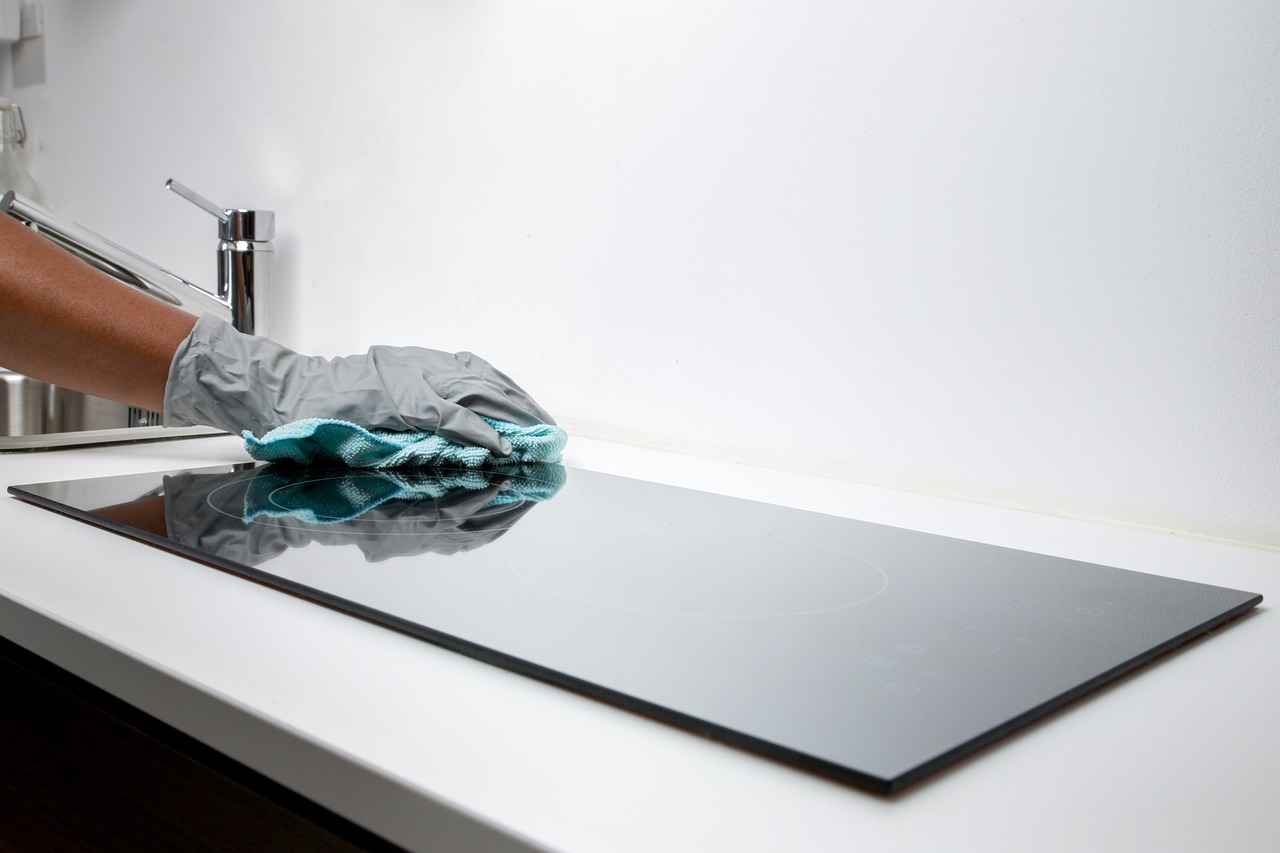
DIY Cleaning Solutions for Silver Jewelry
When it comes to maintaining the luster of your silver jewelry, DIY cleaning solutions can be an excellent alternative to commercial products. Not only are they often more cost-effective, but they also allow you to use safe, natural ingredients that are readily available in your home. This section presents easy-to-follow recipes for effective DIY cleaners that will help restore your silver’s shine without the use of harsh chemicals.
Using homemade cleaning solutions for your silver jewelry has several advantages:
- Cost-Effective: Most ingredients are inexpensive and can be found in your kitchen.
- Environmentally Friendly: DIY solutions often use natural ingredients, reducing chemical waste.
- Customizable: You can adjust the recipes to suit your specific needs and preferences.
One of the easiest and most effective methods for cleaning silver jewelry is using a baking soda paste. This gentle abrasive can help lift tarnish without scratching the surface of your silver pieces.
Ingredients:- 1/4 cup baking soda- 2 tablespoons waterInstructions:1. Mix the baking soda and water in a small bowl until a paste forms.2. Apply the paste to your silver jewelry using a soft cloth or sponge.3. Gently rub the paste onto the tarnished areas.4. Rinse thoroughly under lukewarm water and dry with a soft cloth.
Combining vinegar and baking soda creates a chemical reaction that can effectively clean silver jewelry. This method is particularly useful for heavily tarnished items.
Ingredients:- 1/2 cup white vinegar- 2 tablespoons baking sodaInstructions:1. In a bowl, combine the vinegar and baking soda. Expect fizzing as they react.2. Place your silver jewelry in the mixture for 2-3 hours.3. Rinse the jewelry under cool water and dry thoroughly with a soft cloth.
Natural ingredients not only offer a safe cleaning option but also minimize the risk of damaging your jewelry. Many commercial cleaners contain harsh chemicals that can erode the silver over time. By opting for DIY solutions, you can maintain the integrity of your pieces while achieving a brilliant shine.
By incorporating these simple and effective DIY cleaning solutions into your jewelry care routine, you can keep your silver pieces looking their best. Regular cleaning will help prevent tarnishing and ensure that your jewelry remains a cherished part of your collection for years to come. Embrace the power of natural ingredients and enjoy the satisfaction of caring for your silver the eco-friendly way!
Baking Soda and Water Paste
A simple baking soda paste can rejuvenate tarnished silver effectively. This common household item is not only readily available but also safe for most silver pieces. Here, we provide a detailed recipe and method for using baking soda to restore the shine of your silver jewelry.
- Baking soda – 1/4 cup
- Water – 2 tablespoons (adjust as needed)
- Soft cloth or sponge for application
- Small bowl for mixing
Creating the paste is simple:
1. In a small bowl, combine 1/4 cup of baking soda with 2 tablespoons of water.2. Mix the ingredients until you achieve a thick paste. If the mixture is too dry, add a little more water until the desired consistency is reached.3. The paste should be thick enough to adhere to your silver items without dripping.
Once your paste is ready, follow these steps for effective cleaning:
- Ensure your silver jewelry is clean and dry before applying the paste.
- Using a soft cloth or sponge, gently apply the baking soda paste to the tarnished areas of the silver.
- Rub the paste in a circular motion, allowing it to penetrate the tarnish.
- Let the paste sit on the jewelry for about 10-15 minutes to allow it to work its magic.
- Rinse the jewelry thoroughly under lukewarm water to remove all baking soda residue.
- Dry the jewelry with a soft cloth, buffing it gently to restore its shine.
Baking soda is an excellent cleaning agent due to its mild abrasive properties. It effectively removes tarnish without scratching the silver surface. Additionally, it is non-toxic, making it a safe choice for cleaning jewelry, especially if you have sensitive skin.
While baking soda is generally safe for most silver items, it’s essential to be cautious with delicate pieces or those with intricate designs. Always test the paste on a small, inconspicuous area before applying it to the entire piece. If your silver jewelry has gemstones or is plated, consult a professional cleaner to avoid any potential damage.
In conclusion, using a baking soda and water paste is a simple, effective, and affordable method to clean tarnished silver jewelry. Regular maintenance and cleaning can help keep your silver looking its best for years to come.
Vinegar and Baking Soda Method
When it comes to cleaning silver jewelry, the is a popular choice among DIY enthusiasts. This powerful combination not only helps to remove tarnish but also restores the shine of your beloved pieces. In this section, we will explore how to use this method safely and effectively, ensuring your silver jewelry remains radiant.
The effectiveness of this cleaning solution lies in the chemical reaction that occurs when vinegar (an acid) and baking soda (a base) are combined. This reaction produces carbon dioxide gas, which helps to lift tarnish from the surface of the silver. Additionally, vinegar’s acidic properties work to dissolve the tarnish, while baking soda acts as a gentle abrasive.
To create this effective cleaning solution, you will need:
- 1/2 cup of white vinegar
- 2 tablespoons of baking soda
- A bowl (preferably glass or stainless steel)
- A soft cloth for polishing
Start by pouring the vinegar into the bowl, then gradually add the baking soda. Be prepared for some fizzing as the two ingredients react. Once the fizzing subsides, your cleaning solution is ready to use.
Follow these simple steps to clean your silver jewelry:
- Submerge the Jewelry: Place your tarnished silver jewelry in the bowl, ensuring it is fully submerged in the cleaning solution. Allow it to soak for about 2-3 hours for optimal results.
- Gently Scrub: After soaking, use a soft cloth or a toothbrush with soft bristles to gently scrub the jewelry, focusing on areas with heavy tarnish.
- Rinse Thoroughly: Once you have scrubbed the jewelry, rinse it under cool running water to remove any residue from the vinegar and baking soda.
- Dry and Polish: Use a clean, dry cloth to thoroughly dry the jewelry. You can also buff it gently to enhance the shine.
While the vinegar and baking soda method is generally safe for most silver jewelry, there are a few precautions to keep in mind:
- Avoid using on antique or delicate pieces: If your jewelry has gemstones or is particularly old, consult a professional before using this method.
- Test on a small area: If you are unsure about the reaction, test the solution on a small, inconspicuous area first.
- Wear gloves: If you have sensitive skin, consider wearing gloves while handling the cleaning solution.
The vinegar and baking soda method is an easy and effective way to clean your silver jewelry. By following the steps outlined above, you can safely restore your pieces to their original luster. Regular cleaning will help prevent tarnishing, ensuring your jewelry remains a stunning accessory for years to come.
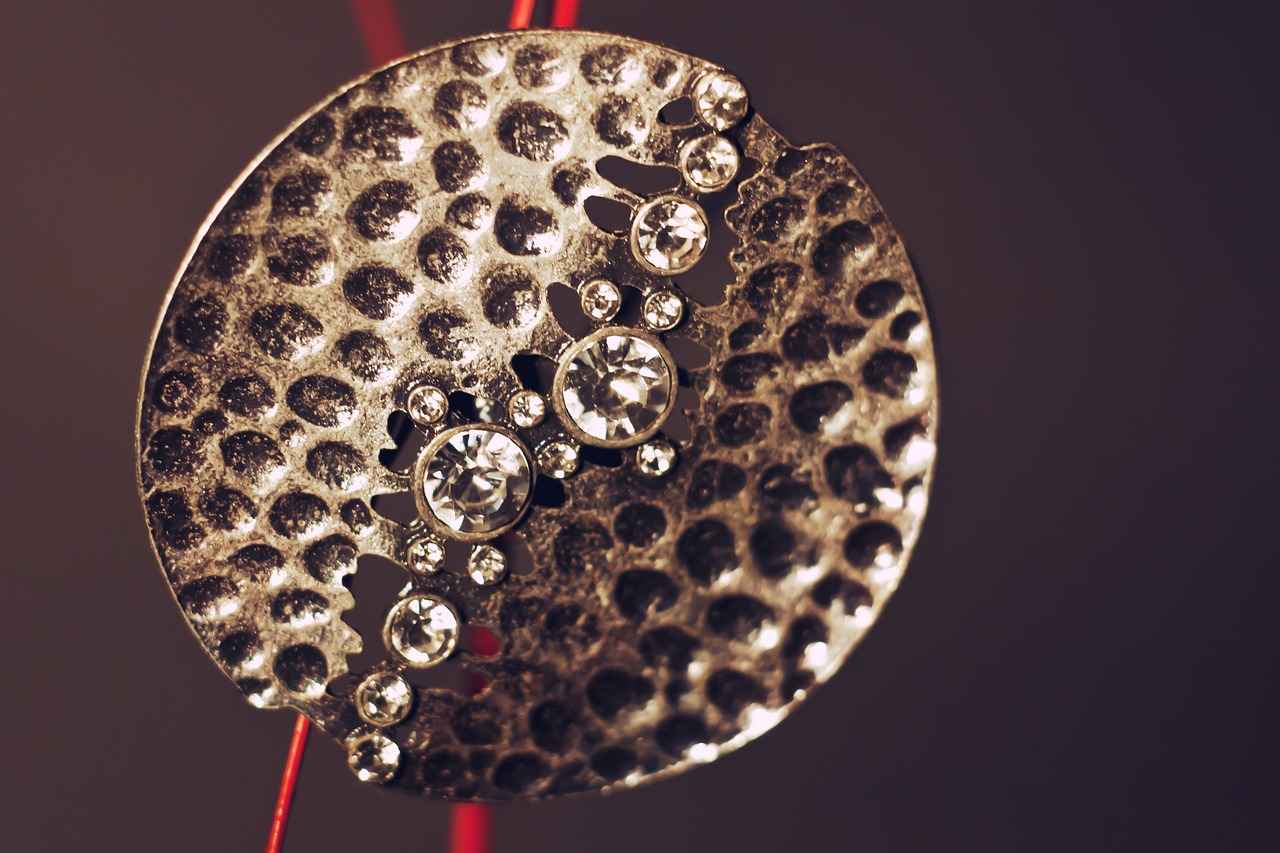
Preventing Tarnish: Storage Tips
Preventing tarnish is essential for maintaining the beauty and shine of your silver jewelry. Proper storage techniques can significantly minimize the exposure of your pieces to tarnishing agents. Here are some practical tips on how to store silver jewelry effectively:
- Use Anti-Tarnish Pouches: Investing in anti-tarnish pouches can greatly help in preserving your silver jewelry. These pouches are designed to absorb moisture and other tarnishing agents, creating a protective barrier around your pieces. You can easily find these pouches online or at jewelry supply stores.
- Store in a Cool, Dry Place: The environment where you store your silver jewelry plays a crucial role in preventing tarnish. Aim to keep your jewelry in a cool, dry location away from direct sunlight and humidity. Avoid places like bathrooms where moisture levels are often high.
- Use Anti-Tarnish Cloths: Wrapping your silver jewelry in anti-tarnish cloths before placing them in storage can provide additional protection. These cloths are treated with special chemicals that inhibit tarnishing. Regularly changing the cloths can enhance their effectiveness.
- Avoid Plastic Bags: While it might be tempting to use plastic bags for storage, they can trap moisture and lead to tarnishing. Instead, opt for breathable fabric pouches or boxes lined with anti-tarnish materials.
- Separate Your Jewelry: Storing silver jewelry separately can prevent scratches and damage. Use individual pouches or compartments within a jewelry box to keep your pieces safe from friction and exposure to air.
- Consider Silica Gel Packs: Including silica gel packs in your jewelry storage can help absorb excess moisture. These packs are often included in packaging for various products and can be reused in your jewelry box.
- Regularly Inspect and Clean: Even with proper storage, it’s essential to regularly inspect your silver jewelry for signs of tarnish. Cleaning them occasionally with a soft cloth can help maintain their shine and keep tarnish at bay.
By implementing these storage tips, you can significantly reduce the risk of tarnishing and ensure that your silver jewelry remains beautiful for years to come. Remember, the key to preventing tarnish lies in minimizing exposure to moisture, air, and other harmful elements. With a little effort, your treasured pieces can continue to shine brightly.
Using Anti-Tarnish Pouches
When it comes to preserving the beauty of your silver jewelry, anti-tarnish pouches can be an invaluable investment. These specially designed pouches are engineered to protect your silver items from tarnishing, helping to keep them looking as stunning as the day you bought them. But how exactly do these pouches work, and where can you purchase them? Let’s explore.
How Do Anti-Tarnish Pouches Work?
Anti-tarnish pouches contain materials that absorb moisture and gases that contribute to tarnishing. Silver tarnishes due to a chemical reaction between silver and sulfur-containing substances in the air. These pouches often use activated charcoal or other absorbent materials to trap these harmful elements, effectively creating a protective barrier around your jewelry.
Benefits of Using Anti-Tarnish Pouches
- Long-Term Protection: By using these pouches, you can significantly extend the lifespan of your silver jewelry.
- Convenience: They are easy to use; simply place your jewelry inside the pouch when not in use.
- Cost-Effective: Investing in anti-tarnish pouches can save you money on frequent cleaning and restoration.
Where to Buy Anti-Tarnish Pouches?
Anti-tarnish pouches can be found in various places, including:
- Jewelry Stores: Many local jewelry shops carry these pouches, often recommending them to customers.
- Online Retailers: Websites like Amazon and specialized jewelry supply stores offer a wide range of options.
- Craft Stores: Some craft stores also stock these pouches, especially those that cater to jewelry makers.
How to Use Anti-Tarnish Pouches Effectively
To maximize the effectiveness of your anti-tarnish pouches, follow these simple steps:
- Clean Your Jewelry: Ensure your silver items are clean and dry before placing them in the pouch.
- Seal the Pouch: Make sure to seal the pouch properly to keep out air and moisture.
- Store in a Cool, Dry Place: Keep the pouches in a location that is not exposed to direct sunlight or humidity.
With regular use of anti-tarnish pouches, you can keep your silver jewelry looking pristine and radiant. Whether you’re a jewelry enthusiast or simply want to maintain the beauty of a few cherished pieces, these pouches are a smart addition to your storage routine.
Choosing the Right Storage Environment
When it comes to preserving the beauty of your silver jewelry, the storage environment plays a crucial role. Proper storage not only prevents tarnishing but also ensures that your pieces remain in pristine condition for years. In this section, we will explore the optimal conditions for storing silver jewelry and provide practical tips to keep it tarnish-free.
Silver tarnishes due to a chemical reaction between the metal and sulfur compounds present in the air. Factors such as humidity, temperature, and exposure to certain chemicals can accelerate this process. Therefore, understanding these factors is essential for creating a suitable storage environment.
- Low Humidity: Aim for a humidity level below 50%. High humidity can lead to increased tarnishing. Consider using a dehumidifier in your storage area if necessary.
- Stable Temperature: Store your jewelry in a cool, stable environment. Extreme temperature fluctuations can cause metal to expand and contract, leading to potential damage.
- Darkness: Exposure to light, particularly sunlight, can also contribute to tarnishing. Store your silver pieces in a dark place, such as a jewelry box or drawer.
To further protect your silver jewelry, consider the following storage practices:
- Use Anti-Tarnish Materials: Consider using anti-tarnish pouches or cloths to wrap your jewelry. These materials help absorb moisture and prevent tarnishing.
- Avoid Plastic Bags: While it may seem convenient, storing silver in plastic bags can trap moisture. Instead, opt for breathable fabric pouches or boxes.
- Separate Your Pieces: Store each piece separately to prevent scratching and tangling. Use individual compartments in your jewelry box or soft pouches.
Choosing the right location is just as important as the storage materials. Here are some ideal places to store your silver jewelry:
- Jewelry Boxes: A dedicated jewelry box with compartments is perfect for keeping your pieces organized and protected.
- Drawer Liners: If you prefer to store your jewelry in a drawer, use a soft liner to minimize friction and protect against scratches.
- Safe or Lockbox: For valuable pieces, consider a safe or lockbox that maintains a stable environment and adds an extra layer of security.
Even with proper storage, it’s essential to regularly check your silver jewelry for signs of tarnish. If you notice any discoloration, gently clean the pieces using appropriate methods to maintain their shine. Establishing a routine maintenance schedule can help ensure that your jewelry remains in excellent condition.
In summary, the environment where you store your silver jewelry significantly impacts its longevity and appearance. By following these guidelines and taking preventive measures, you can enjoy your beautiful silver pieces without the worry of tarnishing.
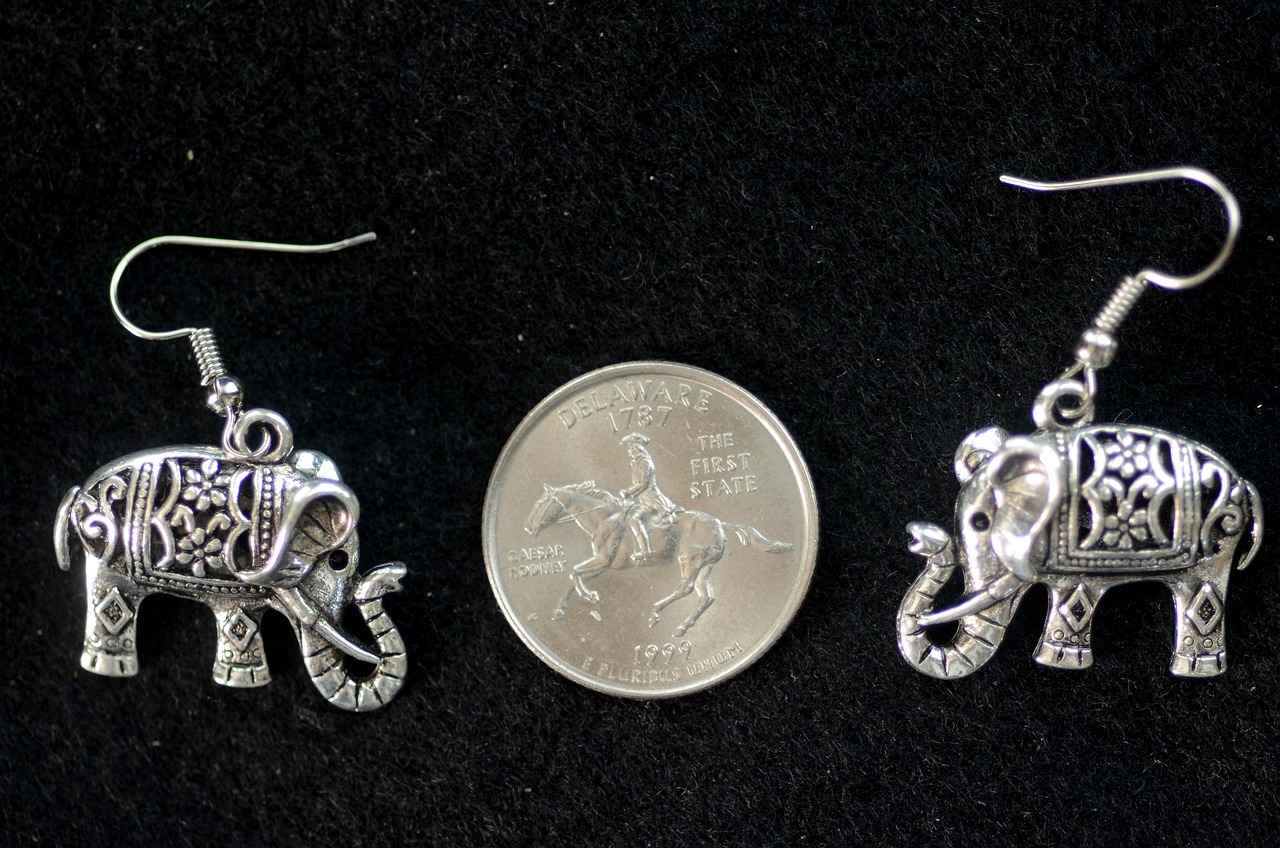
Regular Maintenance for Silver Jewelry
Silver jewelry is not just a fashion statement; it is often a cherished possession that holds sentimental value. To keep these beautiful pieces looking their best, regular maintenance is essential. This section will delve into why routine care is crucial for extending the life of your silver jewelry and how you can implement effective maintenance practices.
Silver jewelry can tarnish over time due to exposure to air, moisture, and chemicals. This tarnishing not only diminishes the aesthetic appeal of your pieces but can also lead to permanent damage if not addressed promptly. By engaging in regular maintenance, you can:
- Prevent tarnish buildup: Regular cleaning helps remove tarnish before it becomes a stubborn problem.
- Identify damage early: Frequent inspections allow you to catch any signs of wear or damage, such as loose stones or broken clasps.
- Maintain value: Well-maintained silver jewelry retains its value over time, making it a wise investment.
Creating a maintenance routine for your silver jewelry can be straightforward. Here are some practical steps to consider:
Depending on how often you wear your silver jewelry, you should establish a cleaning schedule. For everyday wear, consider cleaning your pieces every few weeks. For items worn less frequently, a monthly cleaning may suffice. Use a gentle soap solution or a specialized silver cleaner to keep your jewelry sparkling.
During your cleaning sessions, take the time to inspect each piece for any signs of damage. Look for:
- Loose stones or settings
- Scratches or dents on the surface
- Weak or broken clasps
Addressing these issues promptly can prevent further damage and costly repairs.
In addition to cleaning and inspecting your jewelry, consider these best practices to maintain its beauty:
When not in use, store your silver jewelry in a cool, dry place. Use anti-tarnish pouches or cloths to protect against tarnishing agents. Avoid storing items in humid areas like bathrooms.
Keep your silver jewelry away from harsh chemicals, including perfumes, lotions, and cleaning products. These substances can accelerate tarnishing and damage the metal.
Regular maintenance is key to preserving the beauty and longevity of your silver jewelry. By establishing a cleaning schedule, inspecting your pieces for damage, and following best care practices, you can ensure that your cherished items remain radiant for years to come. Remember, a little effort goes a long way in protecting your investment and enhancing your personal style.
Establishing a Cleaning Schedule
Establishing a cleaning schedule for your silver jewelry is essential in maintaining its luster and preventing tarnish. Regular care not only keeps your pieces looking beautiful but also extends their lifespan. In this section, we will explore how often you should clean your silver jewelry based on its usage and other factors.
The frequency of cleaning silver jewelry largely depends on how often you wear it. Here are some general guidelines:
- Daily Wear: If you wear your silver jewelry every day, it is advisable to clean it once a week. Regular exposure to skin oils, perfumes, and environmental pollutants can lead to tarnishing.
- Occasional Wear: For pieces that are worn occasionally, a cleaning every four to six weeks is sufficient to keep them in good condition.
- Special Occasion Jewelry: Items that are worn infrequently, such as heirlooms or special occasion pieces, should be cleaned every three to six months. This helps prevent tarnish from accumulating over time.
Aside from usage, several factors can influence how often you should clean your silver jewelry:
- Climate: Humid or coastal environments can accelerate tarnishing. In such cases, consider cleaning your jewelry more frequently.
- Storage Conditions: If your jewelry is stored in a non-airtight container or exposed to light, it may tarnish faster. Regular cleaning is recommended if you notice any discoloration.
- Skin Chemistry: Individuals with acidic skin may find their silver tarnishes more quickly. If you notice your jewelry tarnishing rapidly, adjust your cleaning schedule accordingly.
To create an effective cleaning routine, consider the following steps:
- Assess Usage: Determine how often you wear each piece of jewelry and categorize them based on their usage frequency.
- Set Reminders: Use a calendar or reminder app to schedule cleaning sessions. This ensures you won’t forget to maintain your jewelry.
- Choose Cleaning Methods: Decide on the cleaning methods that work best for you. Whether you prefer mild soap, commercial cleaners, or DIY solutions, having a plan will make the process easier.
- Inspect Regularly: During cleaning sessions, take a moment to inspect your jewelry for any signs of damage or wear. This proactive approach can help you address issues before they become serious.
By establishing a cleaning schedule tailored to your jewelry usage and environmental factors, you can keep your silver pieces looking radiant. Regular maintenance is key to preserving their beauty and ensuring they remain cherished items for years to come.
Inspecting for Damage
When it comes to maintaining the beauty and integrity of your silver jewelry, regular inspections are crucial. Over time, even the most well-cared-for pieces can exhibit signs of wear and tear. This section will guide you on what to look for during your inspections and how to address any issues promptly, ensuring your jewelry remains in excellent condition.
- Tarnish: The first sign of trouble often manifests as tarnish, a dulling of the silver’s shine. Regularly check for any discoloration, which can indicate tarnishing.
- Scratches and Dents: Inspect your jewelry for any scratches or dents that may have occurred during wear. These imperfections can affect the overall appearance and value of your pieces.
- Loose Stones: If your silver jewelry features gemstones, ensure they are secure. Gently wiggle each stone to see if it moves. A loose stone can easily fall out and be lost.
- Broken Clasps or Chains: Pay attention to clasps and chains, as these components are often under stress during wear. A broken clasp can lead to the loss of your jewelry.
- Signs of Wear on Settings: The settings that hold stones in place can wear down over time. Check for any signs of weakness or damage that could jeopardize the security of your gemstones.
It is advisable to inspect your silver jewelry at least once a month, especially if you wear it frequently. For pieces that are less often worn, a quarterly inspection should suffice. Regular checks help catch potential issues early, preventing costly repairs down the line.
Once you’ve identified any problems, it’s essential to address them as soon as possible:
- For Tarnish: Use a gentle silver cleaner or a DIY solution to restore the shine. Avoid abrasive materials that could scratch the surface.
- For Scratches: Minor scratches can sometimes be polished out using a silver polishing cloth. For deeper scratches, consider consulting a professional jeweler.
- For Loose Stones: If you find a loose stone, take the piece to a jeweler immediately. They can re-secure the stone properly.
- For Broken Clasps: Repair or replace broken clasps to prevent losing your jewelry. A jeweler can assist with this repair.
- For Worn Settings: If the settings appear worn, have a professional jeweler evaluate the piece. They can either reinforce the setting or recommend a replacement if necessary.
Regularly inspecting your silver jewelry for signs of damage is not just a good practice; it is essential for preserving the beauty and longevity of your cherished pieces. By being proactive, you can enjoy your jewelry for many years without the worry of unexpected damage or loss. Always remember that a little care goes a long way in keeping your silver jewelry looking its best.
Frequently Asked Questions
- Why does silver jewelry tarnish?
Tarnishing occurs due to a chemical reaction between silver and sulfur compounds in the air, moisture, and other environmental factors. This reaction forms a layer of silver sulfide, leading to that dull, tarnished appearance.
- What is the best way to clean silver jewelry?
The safest way to clean silver jewelry is by using mild soap and warm water. Simply mix a few drops of gentle soap in water, soak a soft cloth, and gently wipe your jewelry. Avoid harsh chemicals that can damage your pieces.
- Can I use baking soda to clean silver?
Absolutely! A paste made from baking soda and water is an effective DIY cleaner for tarnished silver. Just apply the paste, gently rub, and rinse thoroughly to restore shine!
- How can I prevent my silver jewelry from tarnishing?
To prevent tarnish, store your silver jewelry in anti-tarnish pouches or cloths, and keep them in a cool, dry place. Regularly wearing your jewelry can also help minimize tarnishing.
- How often should I clean my silver jewelry?
It’s wise to clean your silver jewelry every few months, or more frequently if you wear it often. Regular maintenance helps keep your pieces looking their best and extends their lifespan.
